I’ve been taking a lot of walks since joining The Banner as a local news editor and settling near Locust Point, a historic neighborhood in south Baltimore undergoing a lot of changes.
Locust Point only covers about 100 acres, but it’s a fascinating place to explore by foot or bike.
It’s full of reminders of our history, from Fort McHenry, where American forces withstood the British bombardment of September 1814 to save Baltimore, inspiring Francis Scott Key to write “The Star-Spangled Banner,” to the site of piers where immigrants first stepped ashore.
There are also spectacular water views, most notably at Fort McHenry and the boardwalk near Under Armour’s global headquarters. And there’s the iconic Domino Sugars sign.
The Baltimore Banner thanks its sponsors. Become one.
And finally, Locust Point has a small-town feel, centered by Latrobe Park, designed in the early 20th century by the famed Olmsted Brothers landscape architectural firm.
Not that Locust Point is stuck in the past. The park is just down the road from a redeveloped area of apartments, restaurants, stores and a Courtyard Marriott.
Here are seven places to see in Locust Point.
Fort McHenry
You can go here either to take in the dazzling views of the Patapsco River from the mile-long Sea Wall Trail or immerse yourself in the captivating story of the star-shaped fort, which was constructed in 1776 to protect Baltimore during the Revolutionary War. I love going here for walks or bike rides, free of charge. On a fall afternoon last year, fog settled over the park as the sun peeked through the clouds. Trees in their autumnal glory stood out as the water view was obscured.
On a cold January day, I wandered the visitor center and watched the film about the Battle of Baltimore. There are outdoor flag-changing programs at 10 a.m. and 4 p.m. where the public can help fold the flag. It’s a nice ceremony to take part in. I learned that President Harry S Truman in 1948 ordered the flag be flown perpetually over the fort, and that it was turned into a military hospital during World War I, with more than 100 buildings covering the grounds.
The Baltimore Banner thanks its sponsors. Become one.
The visitor center currently has an exhibit marking the 100th anniversary of its unusual statue of Orpheus, the Greek god of music and poetry that was dedicated to Key and the fort’s defenders from the War of 1812. The dedication in June 1922 drew some 15,000 people to the fort, including President Warren G. Harding and his wife Florence, who greeted World War I veterans.
A good time to visit the fort is on Defenders’ Day weekend in September, when events such as a parade, a mock bombardment, music and fireworks mark the successful defense of Baltimore. Another is when the cherry blossoms are in bloom in the spring, providing a less stressful way to enjoy the wonder of spring without fighting the crowds in Washington.
Fort Avenue railroad bridge
Another favorite spot is the bridge that carries East Fort Avenue over the railroad tracks just west of Fort McHenry. CSX announced in 2018 that it was closing its yard in Locust Point, but would continue serving some local customers, such as Domino Sugar. Trains still occasionally pass under the span. Look north and you’ll see a 10-story mountain of salt at the Port of Baltimore that is used to supply crews that treat roads during wintry weather. You can also view ships in the harbor, Silo Point (a former B&O Railroad grain elevator converted into luxury condos), and Johns Hopkins Hospital across the river.
Look over at the newer red-brick townhouses to the west and imagine the era when the B&O Railroad’s Locust Point Tobacco Warehouse stood there. Look south and you’ll still see rail cars on tracks, as well as I-95 and often a cruise ship docked at the port on the Middle Branch side. It is not unusual to hear cruise or train horns in Locust Point, often mixed in with the steady hum of I-95 traffic. I crossed the bridge on a foggy night and the whole place had a film noir feel. All you needed was Sinatra singing, “I Cover the Waterfront.”
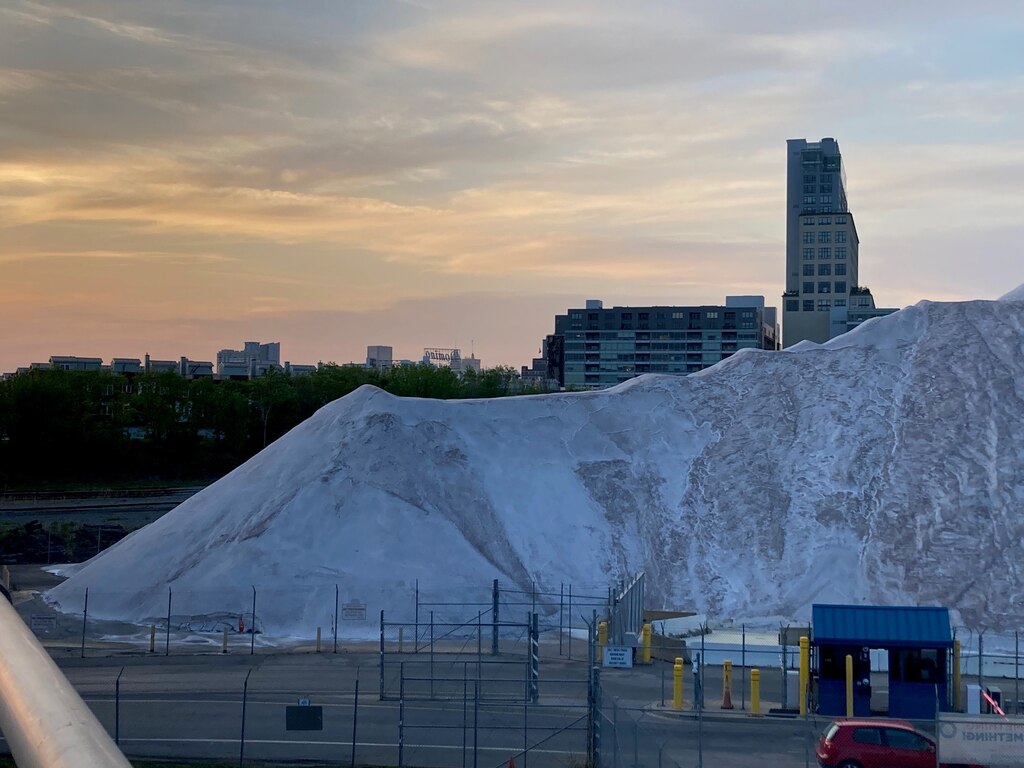
Tide Point
The first time I biked down to the boardwalk at Tide Point, which sits in front of Under Armour, I heard someone describe it as the “best-kept secret in Baltimore.” I don’t know if that’s true, but the views of Harbor Point, Fells Point, Canton and the widening river are wonderful.
The Baltimore Banner thanks its sponsors. Become one.
If you’re biking, you can take a break in an Adirondack chair and spend some time, in the words of Bob Dylan, “watching the river flow.” The adjacent Under Armour complex is a creative redevelopment of a Procter & Gamble complex that dates back to the 1920s and once produced Ivory soap and Cascade liquid detergent, among other things.
Under Armour has a visitor center but plans to decamp in the coming years to a new headquarters in nearby Port Covington. While at Tide Point, check out the abstract Baltimore Immigration Memorial and storage tanks that feature murals of sports legends Cal Ripken Jr., Ray Lewis and Michael Phelps. A winding, tree-lined sidewalk that runs along Key Highway East from Under Armour toward Federal Hill takes you past rail cars and offers views of the 101-year-old Domino Sugar Baltimore Refinery, including the back of its famous sign (switched out two years ago, with an an LED-powered sign replacing the red-neon version there since 1951).
East Fort Avenue
Locust Point’s main street is quite a mix of old and new, and it’s worth taking a stroll to see the changing character of the community. At the west end of Locust Point, the intersection of Fort Avenue and Key Highway offers a view of the Patapsco River and the emerging Harbor Point community on the other side. Newer restaurants such as Limoncello Italian Restaurant & Wine Bar and Taco Mama Cantina (housed in the Anthem House apartment building), The Local Oyster and Copper Shark (in a renovated, historic brick building, The Foundry on Fort Avenue) have become popular draws. They complement an array of neighborhood restaurants and bars tucked into row homes such as LP Steamers, City Limits Sports Bar, Hull Street Blues Cafe, Barracudas Locust Point Tavern, EAT, Serenity Wine Cafe and fun spots like Ice Queens Snoball Shop.
On the south side of Fort Avenue is the McHenry Row development, anchored by a Harris Teeter. The complex, located on the former site of the Chesapeake Paperboard Co., looks out on little-league fields filled with kids or adult kickball players, depending on the day. A water tower preserves the industrial feel of the area. At Porter Avenue, look south to see the top of cruise ships on the other side of I-95.
Meander down the streets named for War of 1812 figures and let your eyes wander to pink flamingos, Adirondack chairs, flags, you name it — all found out front of homes. I also like the lamppost on Woodall Street that’s covered with bumper stickers.
The Baltimore Banner thanks its sponsors. Become one.
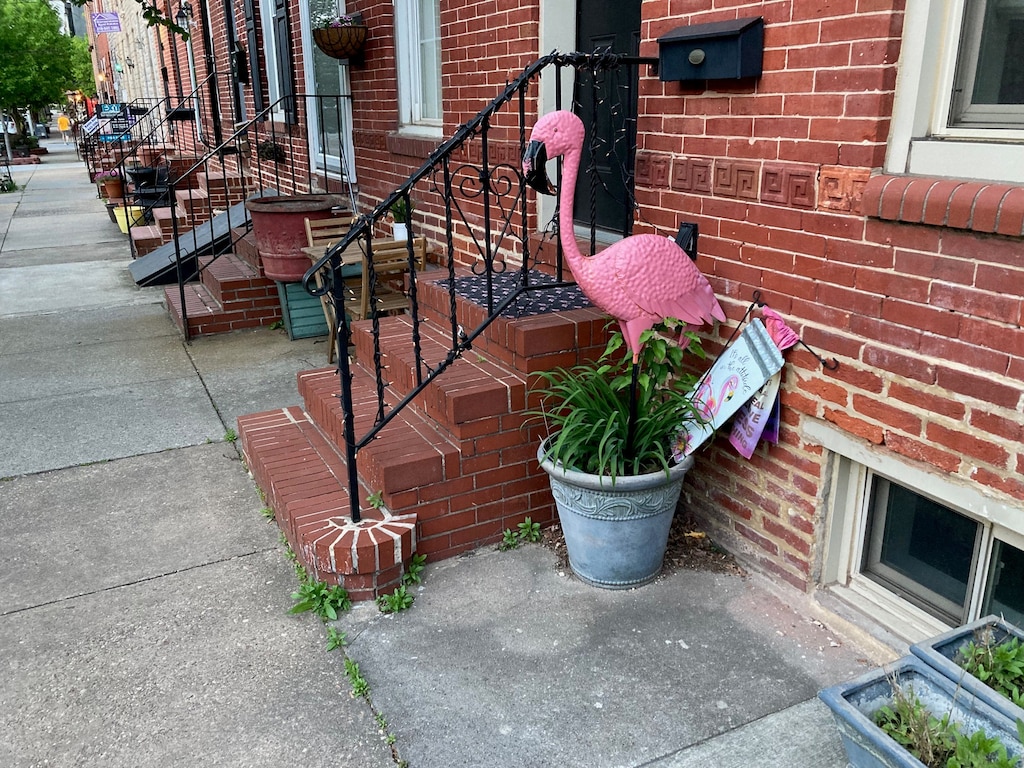
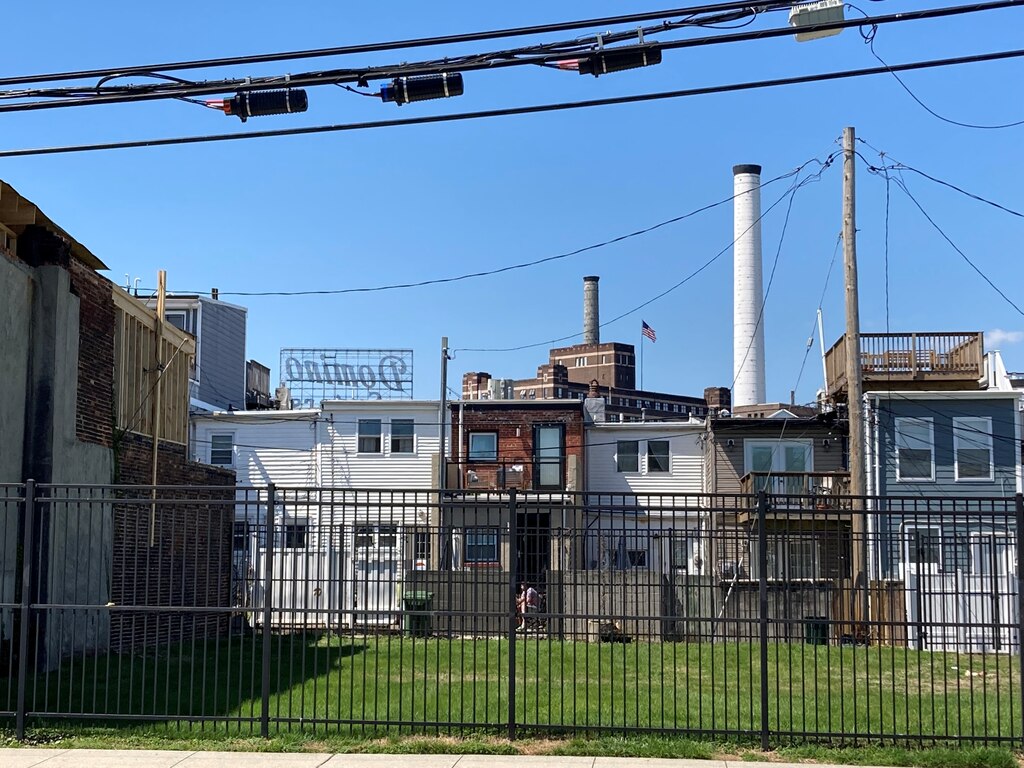
Latrobe Park
This well-kept, 121-year-old park, which covers about six acres, contributes to the old-timey feel of Locust Point. According to Baltimore Heritage, it was “created to serve the working class neighborhoods on the Locust Point peninsula. … This design combined old sensibilities of parks as natural retreats with new ideas that parks could promote recreation.” The park includes a promenade along East Fort Avenue that overlooks tree-lined walking trails, a playground, tennis and basketball courts, a soccer field and a track. Just across Fort Avenue is Our Lady of Good Counsel Catholic Church, the cornerstone of which was laid and blessed by Cardinal James Gibbons in 1889 and once the religious home to many Irish immigrants.
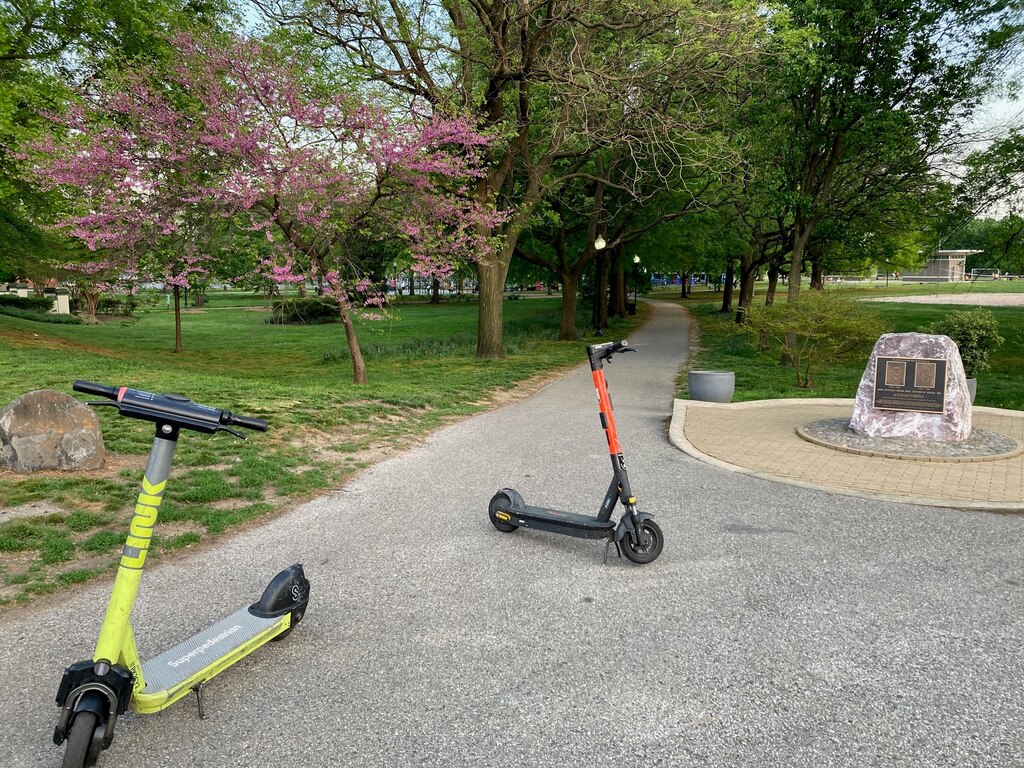
Baltimore Immigration Museum
Locust Point served as “Baltimore’s Ellis Island” before the real thing came along, and so it’s only fitting that it has a small museum that tells the history of the 1.2 million European immigrants who passed through this port of entry between 1868 and its closure in 1914. The museum, at 1308 Beason St., is located in a building constructed in 1904 by the neighboring Locust Point Community United Church of Christ. For more than a decade, Immigrant House provided temporary housing for more than 3,700 European immigrants who disembarked in Baltimore, according to the museum. Many then boarded trains in Locust Point bound for their final destinations.
When I stopped by last fall, a museum staffer named Jim gave me a brief tour and discussed the different ethnic and religious groups that settled in Baltimore during those years (including Germans, Irish, Jews, Poles, Lithuanians, Czechs, Italians and Greeks), and offered to check the museum’s records for any of my ancestors. I asked him where the ships carrying immigrants docked, and he said they did so at piers near what is now Silo Point (the B&O immigration piers were destroyed in a suspicious 1917 fire that spread to a British steamship). The museum is open weekends from 1 to 4 p.m. March through November or by appointment during the winter.
The Baltimore Museum of Industry
You’ll need more time to see all that the Baltimore Museum of Industry, located at 1415 Key Highway in an 1860s oyster cannery (at the western edge of Locust Point), has to offer. It’s amazing to see how the shores of Baltimore were once filled with steamship docks, canning factories and major manufacturers like Bethlehem Steel at Sparrows Point.
I particularly enjoyed the exhibits on the printing industry, including the many newspapers that Baltimore once boasted. It included historical photos of The Baltimore Sun’s composing room staff in 1914 and a sign for The Baltimore Banner, a short-lived strike newspaper in the mid-1960s. I also enjoyed strolling around some of the outdoor attractions, including a 1906 steam tug, The Baltimore, and a towering, green crane salvaged from Sparrows Point. The museum — like Locust Point in general — is a great place to revisit the city’s history and remember how it once was.
The Baltimore Banner thanks its sponsors. Become one.
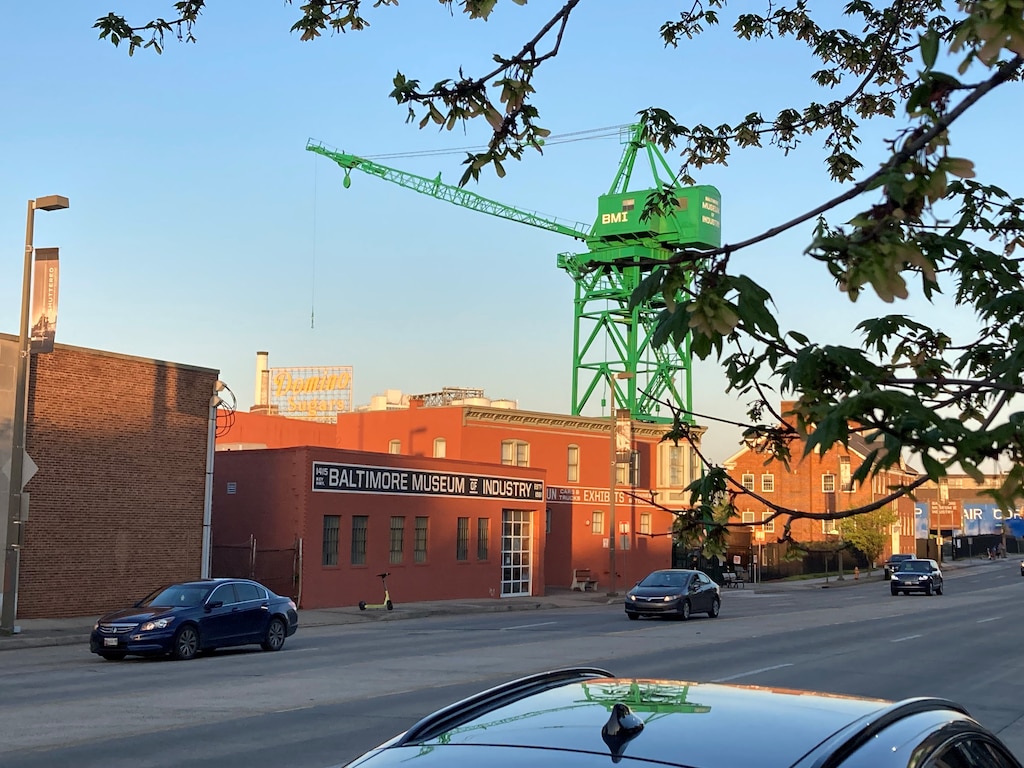
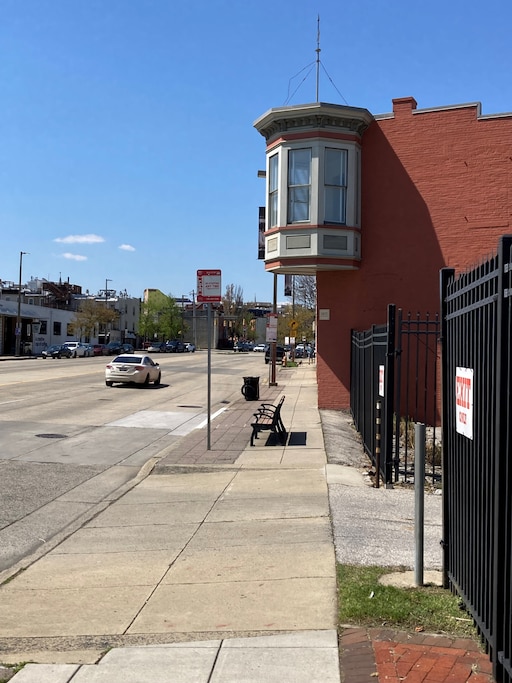





Comments
Welcome to The Banner's subscriber-only commenting community. Please review our community guidelines.